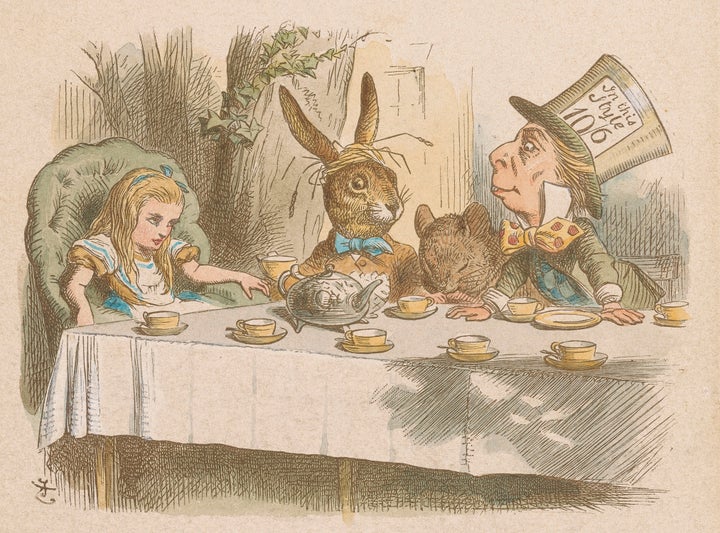
The Morgan Library & Museum
Alice’s Adventures in Wonderland has, from the beginning, been rather capricious.
“I know who I WAS when I got up this morning, but I think I must have been changed several times since then,” says the young protagonist -- expressing, in that way only a child can, a most profound philosophical concept in the simplest terms.
It’s a statement that's become increasingly applicable to the book itself, as Lewis Carroll’s tale has traveled through various generations and artistic media. In the Tim Burton film adaptation, the original is hardly recognizable beneath gaudy makeup and gaudier special effects. Even the story’s name has warped over time; combined with its sequel Through the Looking Glass, the whole tale has been abbreviated to “Alice in Wonderland.”
This year marks the 150th Anniversary of Alice's Adventures in Wonderland, for which biographies and articles and exhibitions far and wide have surfaced. Each tracks a different thread of Alice’s fiction or Carroll’s life, dissecting the many times they’ve changed since the “morning” of the book’s publication. Before breakfast, some may believe six impossible things, but we offer you seven real things: little-known insights into that special combination of madness and sanity, maturity and childhood that was Alice.
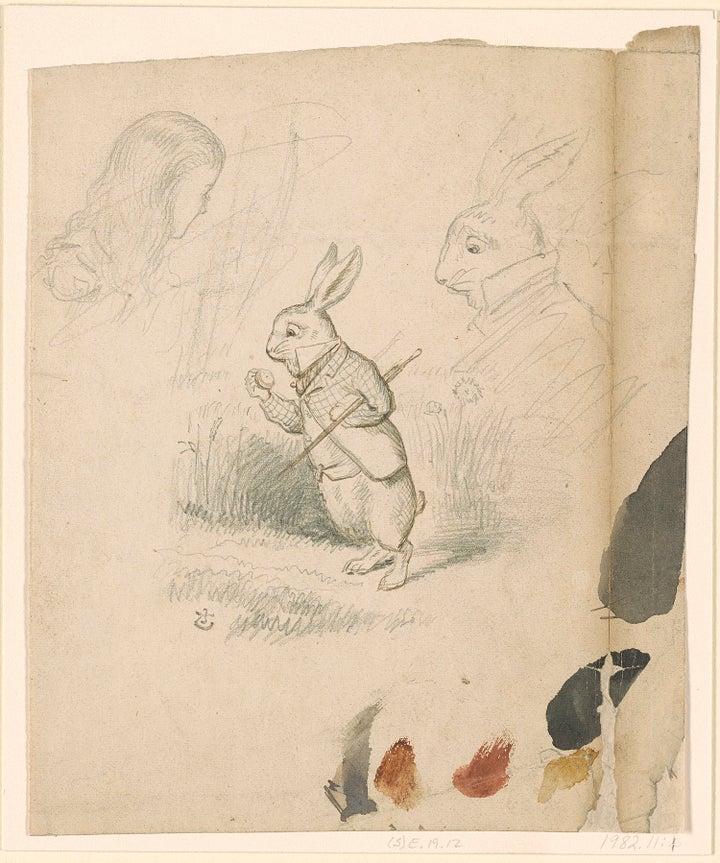
1. Charles Lutwidge Dodgson was hopeless with names.
The story’s original title was Alice’s Adventures Under Ground, which makes it seem like our adolescent protagonist was headed to meet the Queen of the Mole People -- not the Queen of Hearts. Luckily, Carroll was self-aware enough to question that subterranean phrasing, and he proposed several alternatives to his friend, writer and editor Tom Taylor. Some, like Alice Among Goblins, were even worse, but Carroll luckily settled on the fanciful Wonderland one we have today.
Naming himself was similarly onerous. Born Charles Lutwidge Dodgson, Carroll knew he wanted to adopt a pen name when he published a poem called “Solitude” in 1856. He offered four options to his editor, including the anagrams Edgar Cuthwellis and Edgar U.C. Westhill -- both rejected in favor of the less cumbersome Lewis Carroll. Close call.
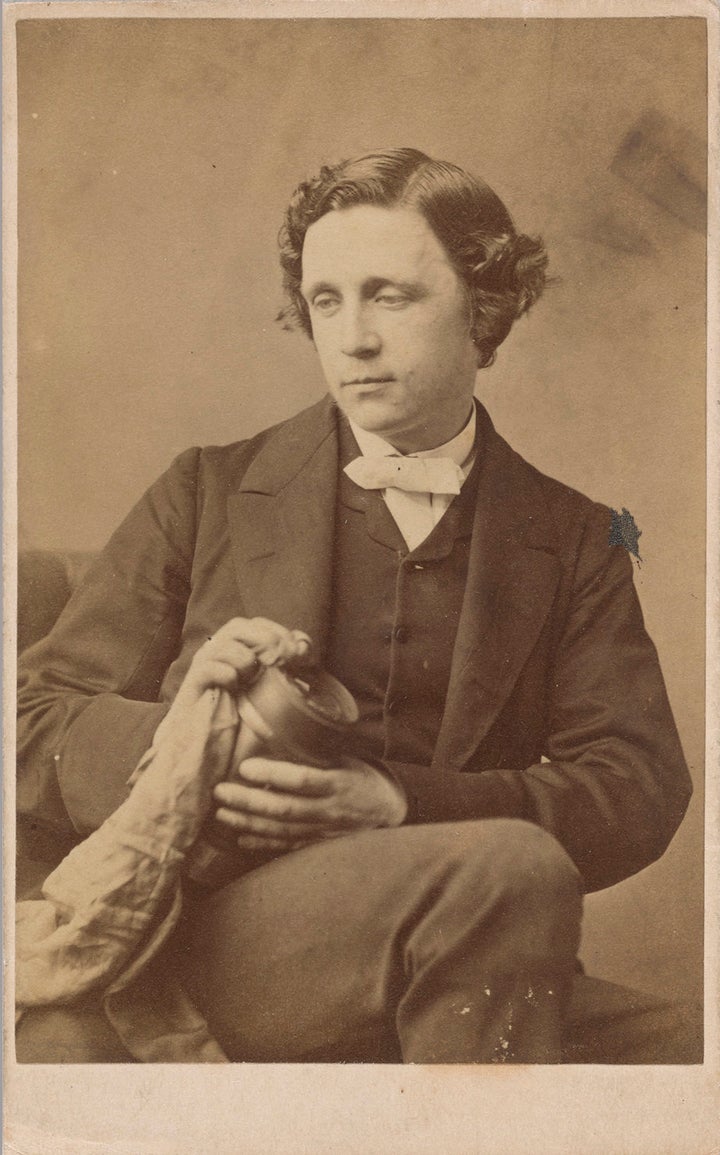
2. The story that would become Alice’s Adventures came into being in one day -- and really was about one girl.
It’s not always possible to pinpoint a book’s inception to a single day or person, but with Alice we have that luxury thanks to his extensive journals. On July 4, 1862, Carroll took the young Alice Liddell and her sisters Lorina and Edith on a boating trip. To entertain the girls, he fashioned -- seemingly out of thin air -- a series of adventures in a strange land that featured Alice as its protagonist. (Lorina and Edith were given the less glamorous roles of Lory and the Eaglet.) Thrilled with the stories, the Liddell girls begged Carroll to record the tales in written form. Though it would take two and a half years for Carroll to complete the manuscript as a Christmas present in 1864, its origin can be traced to that single day. In fact, it’s sneakily memorialized in the book’s epigraph:
All in the golden afternoon
Full leisurely we glide;
For both our oars, with little skill,
By little hands are plied,
While little hands make vain pretence
Our wanderings to guide.
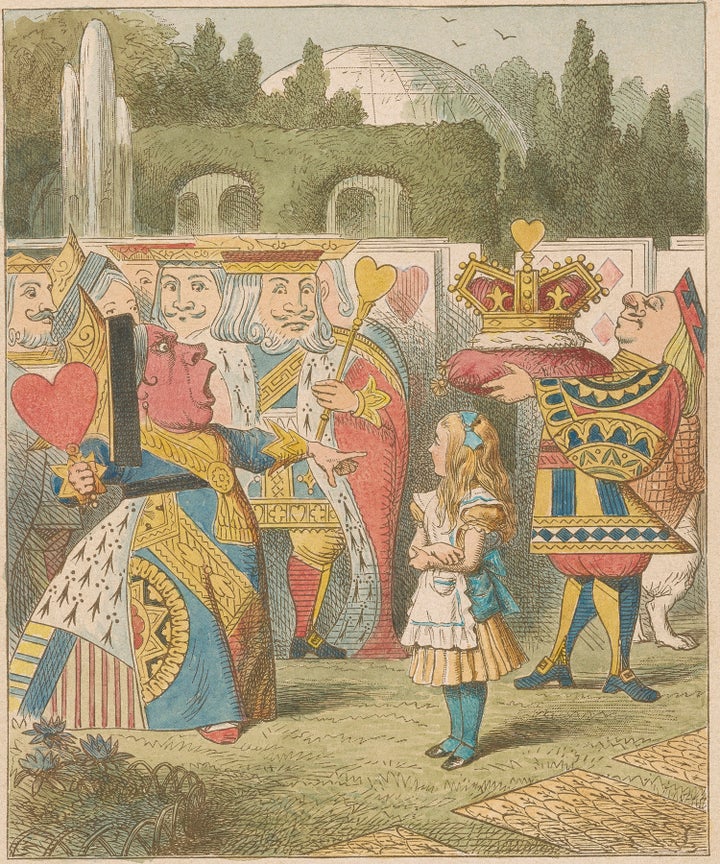
3. Complex mathematics and Christianity are Caroll's secret characters.
Abstract geometry and the Church of England are probably not the first associations you have with the Alice books. But Carroll’s father, a cleric and then archdeacon, instilled in his eldest son a passion for math and a strict allegiance to Anglican doctrine. Carroll was, by all accounts, a mathematical prodigy, and, despite halfhearted study habits, he managed to acquire an enviable lecture position at Oxford's Christ’s Church. Both these influences subtly make their mark in his writing.
Some critics, for instance, read the tales as Carroll’s rebellion against the constraining social and religious context of Victorian England. Alice battles, after all, against bizarre characters who impose strict, nonsensical rules -- similar to how the skeptic would see orthodox religion. Others have focused on how the book addresses popular mathematical discoveries, such as the “symbolic algebra," a field Carroll found preposterous for its departures from traditional logic. The caterpillar, Hatter, and Hare become irrational proponents of the new math, equating ravens with writing desks, while the Chesire Cat is a reassuring emissary of Euclidean geometry, his smile maintaining the form of an ellipse.
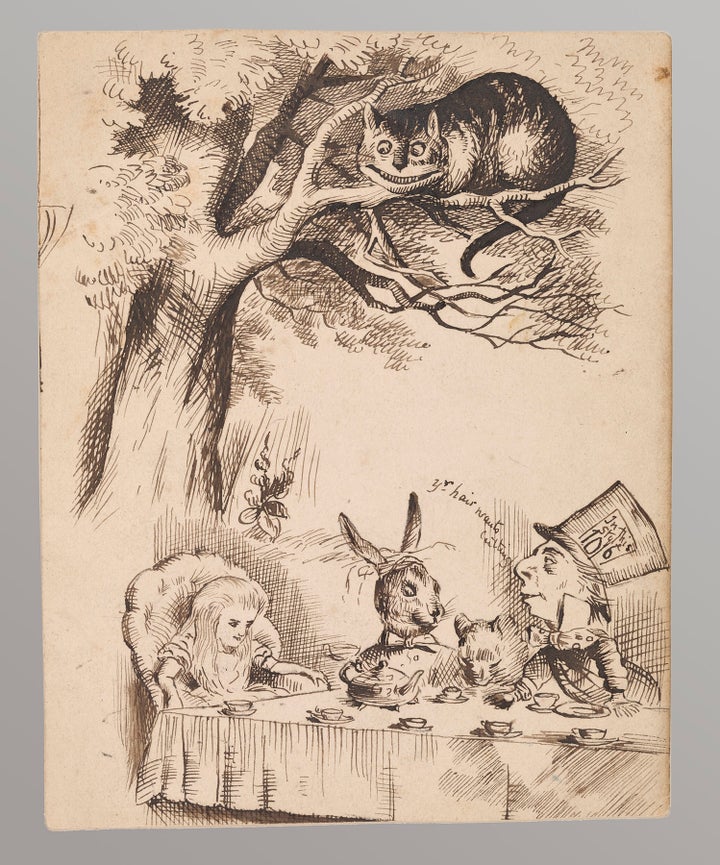
4. Carroll’s relationship with Alice may not have been platonic.
The 150th anniversaries of great books tend not to focus on their negative dimensions, but Carroll’s tale has its sinister side.
Though his writing brought him fame, Carroll’s main artistic preoccupation was photography, for which he set up a studio in his Oxford rooms. Frequently, his subjects were young girls, particularly scantily clad ones. In fact, he wrote in his letters, “one hardly sees why the forms of girls should ever be covered up.” In a sense, he was living a double life: an Oxford mathematician raised in a strict Catholic family, harboring an artistic personality that may have crossed into perverse territory. (Recent biographies, intriguingly, have attempted to normalize this behavior and clear his name.)
Alice Liddell held a unique fixation for Carroll. Her father, Henry Liddell, was the dean of Christ Church, and Carroll had become acquainted with him while photographing the church’s deanery garden in the spring of 1856. Though the exact nature of their relationship is murky -- his diaries from April 1858 to May 1862 are missing -- she played, at the very least, the problematic role of Carroll's much-younger muse. (He was 20 years her senior.) And though Alice’s own writings on the matter reveal no hint of a sexual relationship, there’s something clearly off about the photography. That “golden afternoon” that began the Alice stories may not, it seems, be as pristine as Disney adaptations would have us think.
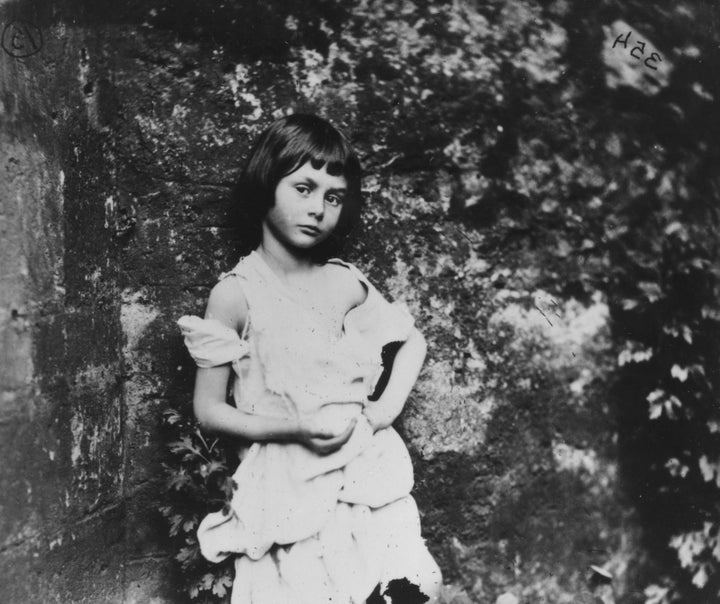
5. Alice has since become a muse for generations of artists and writers after Carroll -- including Lolita author Vladimir Nabokov.
If the religious, social, and mathematical complexities of Alice weren’t enough to prove that it’s far more than a kid’s book -- take Virginia Woolf’s word for it. “The two Alices are not books for children,” she once said. “They are the only books in which we become children.”
What she meant was that they restore our ability to think creatively. They remind adult readers how even a dystopian world ruled by a heartless Queen of Hearts can become a series of delightful games. Surrealists like André Breton and Salvador Dali also took a special interest in the tale for the way it used dream devices and linguistic puns to evade the barriers of waking logic.
Other writers were struck by the tale’s darker side. Vladimir Nabokov, who translated Alice’s Adventures in Wonderland into Russian, was strongly influenced by Carroll’s books while composing his classic Lolita. Nabokov’s novel recounts how mid-30s Humbert Humbert seduces 12-year-old Lolita, aided by his gift at spinning fabulous, enchanting tales. Sound familiar?
Though the Russian mid-century novelist is famed for denying his artistic sources and inspirations, in this case he was quite candid: “I always call him Lewis Carroll Carroll,” he said, “because he was the first Humbert Humbert.”
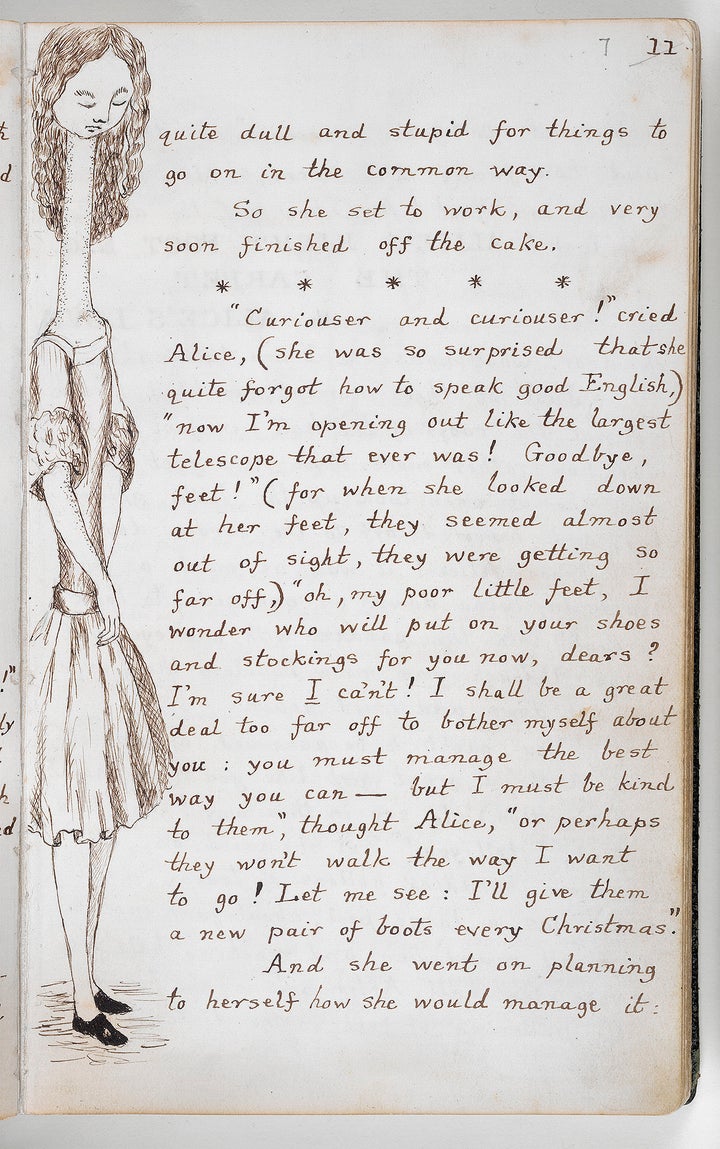
6. There are about 20 first editions of the book still in existence -- and only one original manuscript.
The summer is buzzing with sesquicentennial exhibits, but The Morgan Library & Museum has captured the top prize with the original Alice manuscript at the heart of its show “Alice: 150 Years of Wonderland.”
Normally held at the British Museum, the manuscript is making its first appearance in the U.S. since 1982 -- when it was last lent to the Morgan for the 150th Anniversary of Carroll’s birth. Its return has been five years in the making. The exhibit also features two of the remaining 20 first editions and a variety of other Alice memorabilia the Morgan has acquired over the years. Look out for letters, vintage photographs, and merchandise Carroll licensed in the wake of the book’s success.
Note: He was an early proponent of literary branding and tie-ins.
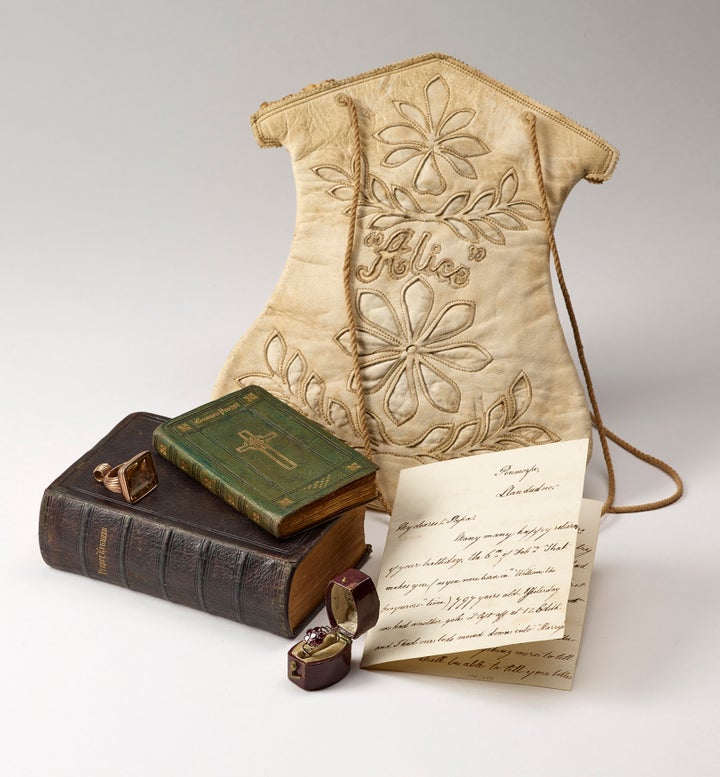
The Morgan Library & Museum
7. Alice's images may be even more important than her words.
Illustrations are an afterthought for most authors, but, as highlighted by the Morgan exhibit, that was never the case for Carroll. He drew 37 pen-and-ink drawings for the original manuscript -- probably why it took him over two years from the sunny boat ride to complete the Christmas present. Although he had a photographer’s eye, he lacked the drawing talent to do justice to the work. So he reached out to Sir John Tenniel, a soon-to-be-famous illustrator at the periodical Punch, who Carroll knew through its editor Tom Taylor. Carroll was fortunate enough to contact Tenniel just before his career took off, and the two worked closely to design the iconic look.
What’s particularly interesting about the images is how they’ve informed later adaptations of the Alice story. Take the first film in 1903. “The directors take some liberties with the narrative, with the storyline,” explained Morgan exhibit curator Carolyn Vega to The Huffington Post, “but what they are fastidious about doing is reproducing Tenniel’s original illustrations, sort of, on film.”
The same is true for the 1951 Disney movie, which plays fast and loose with Carroll’s words, but dares not trespass on the visual aesthetics. Identities, perhaps, can change several times from the morning to afternoon, but Tenniel’s images are decidedly non-capricious.
Alice seemed to know that from the beginning: “What is the use of a book,” she asks, “without pictures or conversation?’”
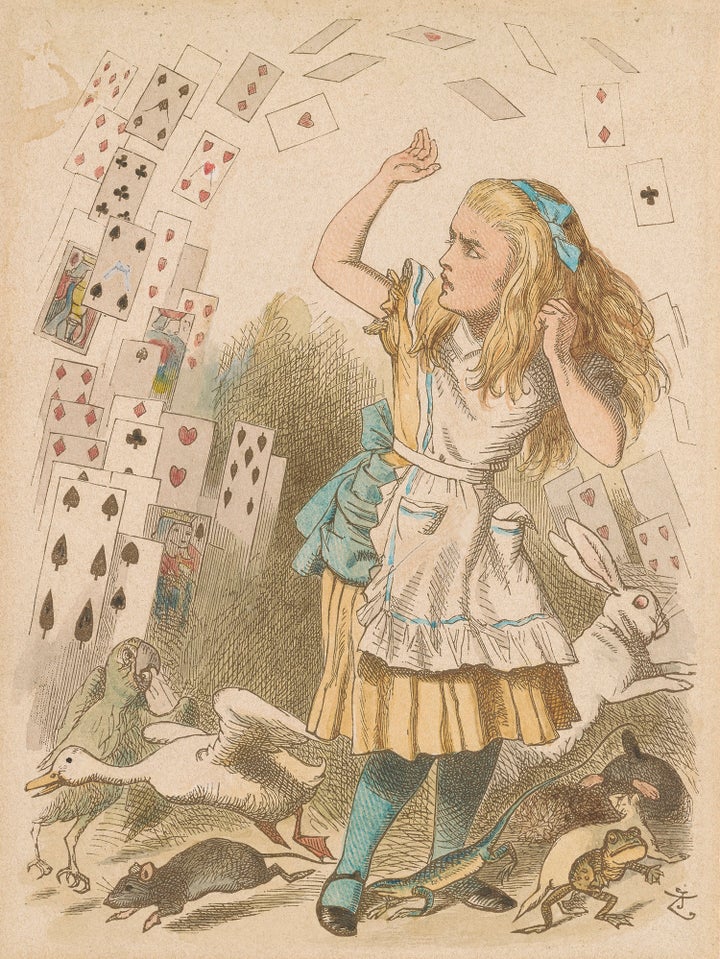
The Morgan Library & Museum
"Alice: 150 Years of Wonderland" will be run Tuesday-Sunday at The Morgan Library & Museum through October 11, 2015.

